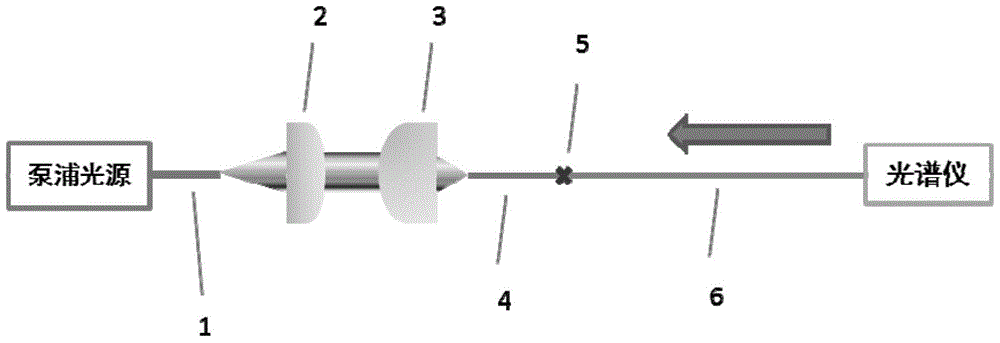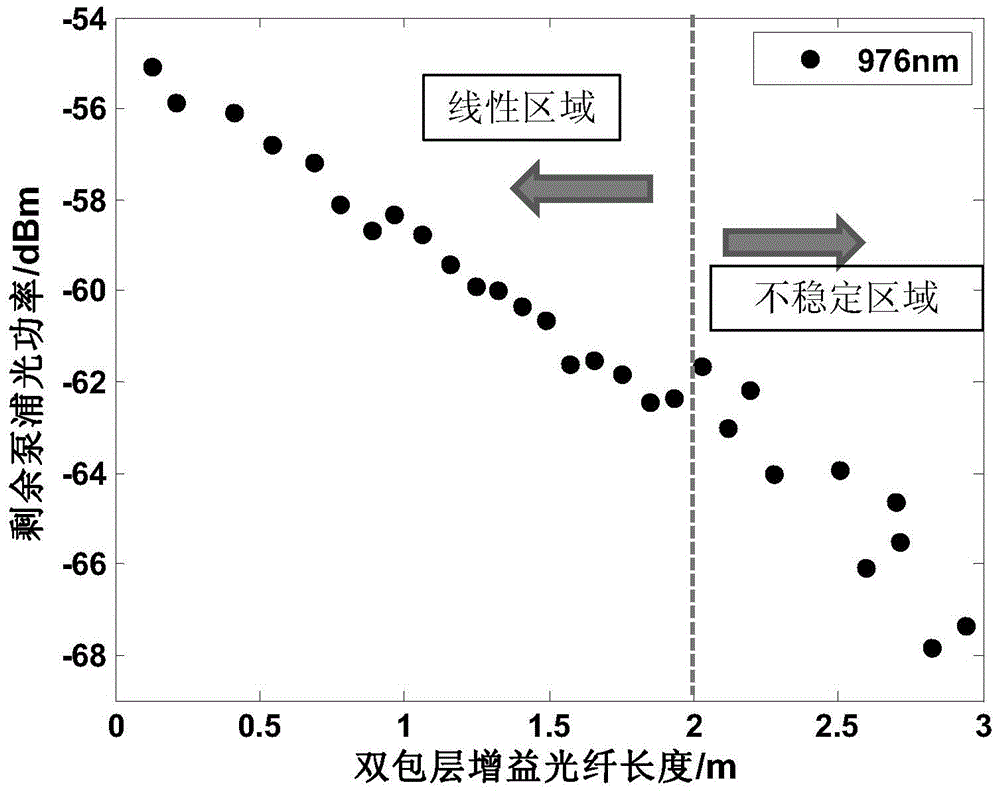Method for testing pump absorption coefficient of double-clad gain fiber
A technology of gain fiber and absorption coefficient, which is applied in the direction of testing optical performance, etc., can solve the problem that the absorption coefficient of gain fiber cannot be given, and achieve the effects of eliminating unstable test results, suppressing spontaneous radiation, and improving accuracy
- Summary
- Abstract
- Description
- Claims
- Application Information
AI Technical Summary
Problems solved by technology
Method used
Image
Examples
Embodiment 1
[0040] A method for testing the pumping absorption coefficient of double-clad gain fiber of the present invention comprises the following steps:
[0041] (1) Select the length L 0 A 1.57m double-clad gain fiber 6 to be tested. use as figure 1 In the test system shown, the double-clad gain fiber 6 to be tested is fused with the energy-transmitting fiber 4, and the parameters of the energy-transmitting fiber 4 (core diameter 30 μm, numerical aperture 0.07, inner cladding outer diameter 400 μm, numerical aperture 0.46) and The double-clad gain fiber 6 to be tested is consistent (the core diameter is 30 μm, the numerical aperture is 0.07, the outer diameter of the inner cladding is 400 μm, and the numerical aperture is 0.46), and the gain ion of the double-clad gain fiber 6 to be tested is Yb 3+ Ions, the gain absorption region is 850-1100nm. The full numerical aperture of the pump light is coupled into the inner cladding of the energy-transfer fiber 4 , and the power is monito...
Embodiment 2
[0045] In order to study the influence of the length of the double-clad gain fiber 6 to be tested on the test results, the length L of the double-clad gain fiber 6 to be tested in the present embodiment 0 Choose 3m. After the optical path is built according to the test steps, the gain fiber is intercepted from the output end of the double-clad gain fiber to be tested to the direction of the energy-transmitting fiber. The length of the gain fiber is about 10 cm each time, and the output spectrum is tested after interception. Read the remaining pump light power of the 976nm band laser from the spectrum, such as image 3 shown. It can be seen from the figure that when the length of the double-clad gain fiber 6 to be tested is within 2m, the remaining pump light power decreases almost linearly with the increase of the gain fiber length; and when the fiber length is greater than 2m, the mode disturbance phenomenon Gradually affect the remaining pump light power, and the remaining...
PUM
 Login to View More
Login to View More Abstract
Description
Claims
Application Information
 Login to View More
Login to View More - Generate Ideas
- Intellectual Property
- Life Sciences
- Materials
- Tech Scout
- Unparalleled Data Quality
- Higher Quality Content
- 60% Fewer Hallucinations
Browse by: Latest US Patents, China's latest patents, Technical Efficacy Thesaurus, Application Domain, Technology Topic, Popular Technical Reports.
© 2025 PatSnap. All rights reserved.Legal|Privacy policy|Modern Slavery Act Transparency Statement|Sitemap|About US| Contact US: help@patsnap.com



